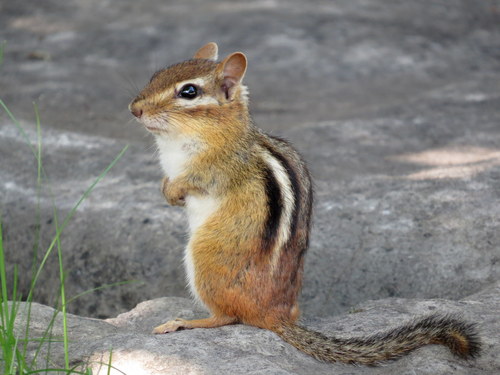
Eastern Chipmunk
The vibrant Eastern Chipmunk scurries through North American forests, its cheek pouches bulging with seeds, aiding in forest regeneration. Striped in black and white, this creature dashes, storing food for winter and contributing to its habitat's health and diversity.
2-3 years
Lifespan
66.0 - 150.0 g
Weight
Length: 25 - 30 cm
Size
Yellow, White, Dark, Brown, Grey-Brown
Color
6 months
Age of Sexual Maturity
40 days
Age of Weaning
18 mph
Top Speed
Least Concern
Conservation Status
Stable
Population Trend
Distribution Range of the Eastern Chipmunk
Tamias striatus, commonly known as the Eastern chipmunk, is native to North America. Its geographical distribution includes southeastern Canada and the eastern United States, extending from Manitoba and Quebec in Canada, down through the United States to the northern parts of Missisippi, Georgia, and Louisiana.
Eastern Chipmunk's Habitat
Environmental Conditions
The Eastern chipmunk typically inhabits deciduous forests, forest edges, and fringes, but it can also be found in suburban areas near wooded patches. The regions it resides in experience a temperate climate with four distinct seasons, including cold winters and warm summers.
Ecological Niche
Tamias striatus is primarily a ground-dwelling creature, although it is capable of climbing trees. It plays a crucial role in its ecosystem as both a prey species and a seed disperser. The chipmunk constructs complex burrow systems that serve as shelter and storage for food. These burrows often include multiple chambers and entrances, which help in avoiding predators and managing food supplies.
Copyright @ Nature Style Limited. All Rights Reserved.
 English
English